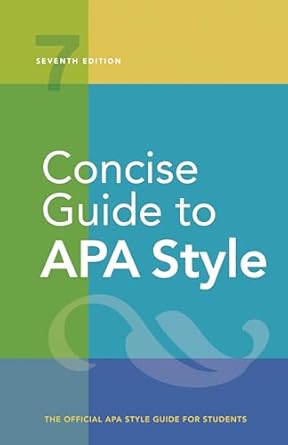[toc]
quoting paraphrasing avoiding common citation errors
Concise Guide to APA Style: 7th Edition (OFFICIAL)
Page 219 Review
The Art of Paraphrasing and Quoting: A Detailed Analysis
Effective academic writing hinges on the ability to accurately and ethically integrate external sources.
This involves mastering both paraphrasing and direct quotation techniques.
Table 8.2 from the provided text offers valuable insights into the correct and incorrect ways to cite sources, particularly within the context of direct quotations.
Let’s delve into a deeper analysis of these examples.
Understanding Direct Quotations
Direct quotations are verbatim reproductions of another author’s words.
They are crucial when the original wording is particularly impactful, unique, or essential to the argument being made.
However, it’s equally important to cite them correctly to avoid plagiarism and ensure proper attribution.
Common Errors and How to Avoid Them
Punctuation Placement
One common error involves the placement of punctuation marks relative to the citation.
The text highlights this with the example:
Incorrect: Effective teams can be difficult to describe because “high performance along one domain does not translate to high performance along another.” (Ervin et al., 2018, p. 470).
Correct: Effective teams can be difficult to describe because “high performance along one domain does not translate to high performance along another” (Ervin et al., 2018, p. 470).
The key takeaway here is that the period (or any other end-of-sentence punctuation) should follow the citation, not precede it.
This ensures clarity and proper grammatical flow.
Citation Placement
Another frequent mistake is placing the citation within the quotation marks.
The text illustrates this with:
Incorrect: “Even smart, educated, emotionally stable adults believe superstitions that they recognize are not rational (Risen, 2016, p. 202),” as exemplified by the existence of people who knock on wood for good luck.
Correct: “Even smart, educated, emotionally stable adults believe superstitions that they recognize are not rational,” as exemplified by the existence of people who knock on wood for good luck (Risen, 2016, p. 202).
The citation should always be placed outside the quotation marks.
This clearly distinguishes the quoted material from the source information.
Consistency in Parenthetical Information
When the author’s name is mentioned in the sentence itself (narrative citation), the parenthetical citation should only include the year and page number.
The text demonstrates this with:
Incorrect: “Some people are hilarious, others are painfully unfunny, and most are somewhere in between,” (p. 231) wrote Nusbaum et al. (2017) in their exploration of humor.
Correct: “Some people are hilarious, others are painfully unfunny, and most are somewhere in between,” wrote Nusbaum et al. (2017, p. 231) in their exploration of humor.
The year should be included within the parentheses alongside the page number when the quotation precedes the narrative citation.
Handling Question Marks within Quotations
When quoting a question, the question mark should remain inside the quotation marks.
The text provides this example:
Incorrect: The item read, “What were the best aspects of the program for you”? (Shayden et al., 2018, p. 304).
Correct: The item read, “What were the best aspects of the program for you?” (Shayden et al., 2018, p. 304).
This ensures the quoted sentence retains its original meaning and grammatical structure.
Redundancy in Narrative Citations
When using a narrative citation, avoid repeating the author and year within parentheses.
As shown in the text:
Incorrect: In 2018, Soto argued that “more similar stimuli, such as those coming from the same modality, produce more configural processing” (Soto, 2018, p. 598).
Correct: In 2018, Soto argued that “more similar stimuli, such as those coming from the same modality, produce more configural processing” (p. 598).
Repeating the author and year is redundant and clutters the text.
Key Takeaways
The examples provided in Table 8.2, like “Effective teams can be difficult to describe because ‘high performance along one domain does not translate to high performance along another’ (Ervin et al., 2018, p. 470)”, highlight the importance of meticulous attention to detail when incorporating direct quotations into academic writing.
Accurate punctuation, proper citation placement, and avoiding redundancy are crucial for maintaining academic integrity and ensuring clarity in scholarly work.
The correct use of quotation marks, as demonstrated in “Even smart, educated, emotionally stable adults believe superstitions that they recognize are not rational,’ as exemplified by the existence of people who knock on wood for good luck (Risen, 2016, p. 202),” showcases the need for precision.
Furthermore, understanding how to correctly cite questions, such as “The item read, ‘What were the best aspects of the program for you?’ (Shayden et al., 2018, p. 304),” and avoiding unnecessary repetition, as seen with “In 2018, Soto argued that ‘more similar stimuli, such as those coming from the same modality, produce more configural processing’ (p. 598),” are essential skills for any academic writer.
By carefully adhering to these guidelines, writers can effectively utilize direct quotations to strengthen their arguments and provide credible evidence while upholding the principles of academic honesty.
Buy full ebook for only $18: https://www.lulu.com/shop/american-psychological-association/concise-guide-to-apa-style-7th-edition-official/ebook/product-rmzpq54.html?page=1&pageSize=4

